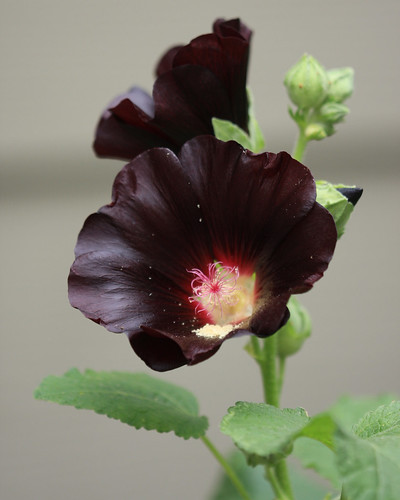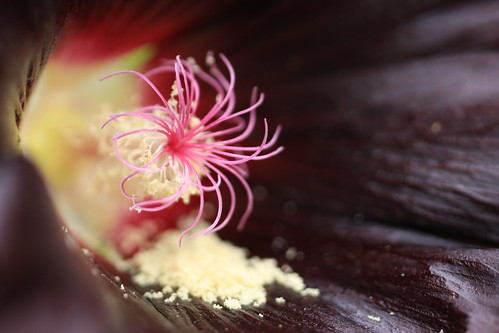And so it came to pass that on Friday, August 28, 2009, I came into possession of one of the world’s most effective field macro lenses, the Canon EF 180mm f/3.5 L USM Macro. (Contrary to quickly-spreading rumors, no, I did not trade a kidney for it.)
So what do I intend to do with such a specialized lens? Simple: get really, up-close-and-personal with many of the smaller creatures and phenomena of nature that generally go unnoticed. For example, in these first test shots of one of the Hollyhocks growing outside our home in Scappoose, you can see that a very nice, tight portrait style shot can be captured with the lens.

However it’s primary purpose is to allow the photographer to get a very close but highly detailed view of the subject while still remaining at sufficient distance so as not to cast shadows or, in the case of insects or even small animals, not frighten them. In the case of flowers, it is thus possible to visually “crawl inside” them to discover just what magnificent structures they truly are.

The challenge is that such a high level of magnification combined with the macro-photographic capability of the lens yields a depth of field (plane of focus) that is remarkably shallow – a feature that allows for the exceptional close-up details to be captured but which at the same time requires a tripod head with far more fine adjustment control than the one I presently use (thus causing me to direct my materialistic longings toward the products offered by Really Right Stuff).
With summer not yet over and a host of possible subjects to be discovered this autumn, I foresee putting this lens to use quite a lot in the coming weeks, as well as spending a healthy amount of time perusing the pages of Alan Detrick‘s Macro Photography for Gardeners and Nature Lovers. What might I find in the wee small corners of nature? Let’s just say that another image captured during my session with the Hollyhocks is already saved and being readied for an astonishingly subject-appropriate a Halloween post.

August 29, 2009 @ 07:35
Wow!!! Spectacular. You can see the little grains of pollen…beautiful. I’d like to get a lens like this! I’ve been faking it with a zoom and cropping, but can’t obtain this kind of crisp detail. Thanks for the info.
September 4, 2009 @ 10:42
Amazing shots!
September 6, 2009 @ 08:29
Holy schmokes….that’s gorgeous!!! I’m lusting after a macro lens as well. Anyone out there need an extra kidney? Huh? Huh?